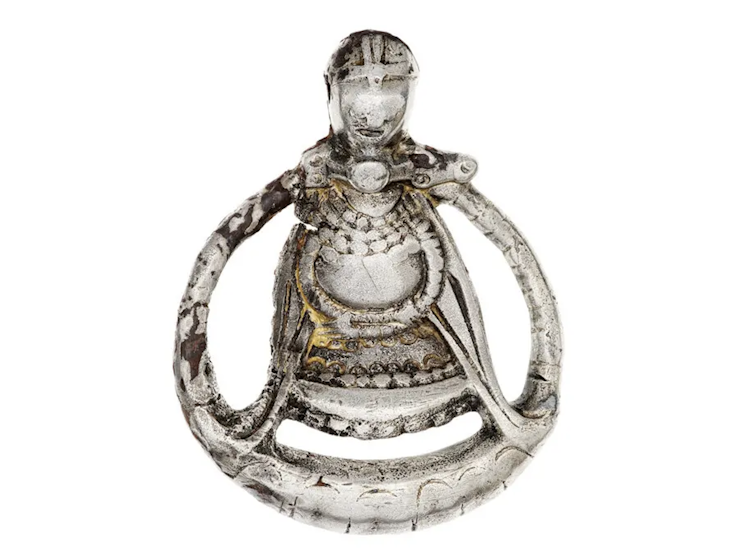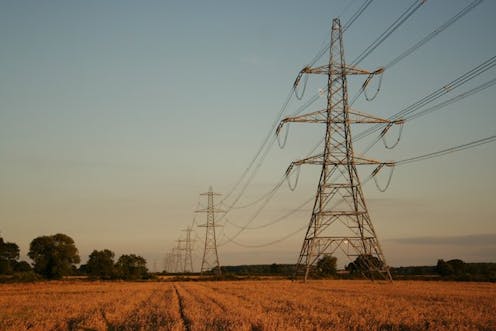Source: The Conversation – Canada – By Deborah de Lange, Associate Professor, Global Management Studies, Toronto Metropolitan University
The G7 summit in Alberta, hosted by Prime Minister Mark Carney, has ended with only passing mention of fighting climate change, including a statement on wildfires that is silent on the pressing need to reduce greenhouse gas emissions.
This is puzzling. Canadians didn’t opt for Conservative Pierre Poilievre, considered by some to be an oil and gas industry mouthpiece, in the last federal election. Instead, voters gave Carney’s Liberals a minority government.
Carney was the United Nations Special Envoy on Climate Action and Finance and was behind the UN-backed Net-Zero Banking Alliance, so some Canadians might have assumed he’d prioritize climate action if he won the election. Instead, Carney has described developing fossil fuel infrastructure as “pragmatic.”
But it’s unclear how a country grappling with abysmal air quality due to wildfires fuelled by global warming will benefit from further global fossil fuel development and its related emissions.
Read more:
Wildfire smoke can harm your brain, not just your lungs
Warming rapidly
Canada is warming faster than most of the globe. Its leaders should be laser-focused on mitigating climate change by reducing fossil fuel use to the greatest extent possible, as soon as possible.
This decades-long understanding of how to approach climate action has been repeatedly explained by experts and is well known to governments globally. Canada’s prime minister was once one of those experts.
Carney now has a tremendous opportunity to lead by steering Canada in a clean direction.
Canada is at the forefront of clean technology, with numerous business opportunities emerging, particularly in areas like circular economy international trade. These opportunities not only support Canada’s commitment to meeting its Paris Agreement targets but also help expand and diversify its global trade.
Eco-industrial parks
Canada already has exemplar eco-industrial parks — co-operative businesses located on a common property that focus on reducing environmental impact through resource efficiency, waste reduction and sharing resources. Such industrial communities are in Halifax and in Delta, B.C. They represent significant investment opportunities.
Vacant urban land could be revitalized and existing industrial parks could boost their economic output and circular trade by building stronger partnerships to share resources, reduce waste and cut emissions.
Canada would benefit economically and environmentally by building on existing expertise and expanding successful sustainability strategies to achieve economic, environmental and social goals.
But by continuing to invest in fossil fuels, Canada misses out on opportunities to diversify trade and boost economic competitiveness.
The secret to China’s success
Real diversification makes Canada less vulnerable to economic shocks, like the ones caused by the tariffs imposed by United States President Donald Trump.
Fossil fuel reliance increases exposure to global economic risks, but shifting to cleaner products and services reduces climate risks and expands Canada’s global trade options. China’s economic rise is partly a result of this strategy.
Read more:
While the U.S. threatens tariffs and builds walls around its economy, China opens up
That’s seemingly why Trump is so fixated on China. China today is a serious competitor to the U.S. after making smart trade and economic decisions and forging its own path, disregarding American pressure to remain a mere follower.
Investing in its huge Belt and Road Initiative, China also aligned itself with the United Nations Sustainable Development Goals. It’s building diplomatic bridges with many Belt and Road countries in southeast Asia as Trump’s America alienates its partners, pulling out of the Paris Agreement and cutting foreign aid.
As another one of America’s mistreated partners, Canada was poised to forge its own path under Carney. Instead, Carney is supporting American oil and gas by encouraging Canadian pipeline projects.
Clean innovation is the path forward
Canadian oil and gas is a concentrated industry controlled by a wealthy few, primarily Americans. More pipelines would therefore mean more sales of fossil fuels to other countries, with the beneficiaries mostly American.
Fossil fuel investments reduce Canada’s diversification because the resources used to further these projects could go elsewhere — toward clean diversification. With almost unlimited clean economy options across many sectors, clean diversification would broaden Canada’s economic and trade portfolios and reduce American control.
Read more:
Why Canada’s Strong Borders Act is as troublesome as Donald Trump’s travel bans
This is International Business 101, and would make the Canadian economy more competitive through innovation, while reducing the country’s climate risk.
California, often targeted by Trump for its policies, has been a leader in clean innovation, making its economy the envy of the world.
Read more:
California is planning floating wind farms offshore to boost its power supply – here’s how they work
My recent research shows that clear, decisive choices like those made in California will be key to Canada’s future success. Canada must make choices aligned with goals — a core principle of strategic management.
My research also suggests Canada must restructure its energy industry to focus on renewable energy innovation while reducing fossil fuel reliance. Increased renewable energy innovation, as seen in patent numbers, leads to higher GDP.
Contrary to common beliefs, pollution taxes boost the economy in combination with clean innovation. But when the government supports both the fossil fuel industry and clean industries, it hinders Canada’s transition to a cleaner future.
Trapped by the fossil fuel industry?
Do Canadian taxpayers truly want to keep funding an outdated, polluting industry that benefits a wealthy few, or invest in clean industries that boost Canada’s economy, create better jobs and protect the environment? To differentiate Canada from the United States, it would make sense to choose the latter.
Carney should consider refraining from pushing for the fast-tracking of polluting projects. If he doesn’t, Canada will become more uncompetitive and vulnerable, trapped by the fossil fuel industry.
Read more:
Mark Carney wants to make Canada an energy superpower — but what will be sacrificed for that goal?
Carney’s support for pipelines may have stemmed from Alberta Premier Danielle Smith’s implicit support for Alberta sovereignty. She made veiled threats to Canada at a critical juncture, when Trump was making repeated assertions about annexing Canada.
Missed opportunities
Alberta didn’t vote for Carney. But Canadians who care about mitigating climate change did.
Banks that felt pressure to at least recognize sustainable finance during the Joe Biden administration joined Carney’s Net-Zero Banking Alliance.
But as soon as Trump came to power a second time and walked away from the Paris Agreement, many American banks abandoned the alliance. Canadian banks followed suit, and Carney remarkably missed another moment to show Canadian leadership by stopping their exit.
In fact, Carney seems to have abandoned his own organization to appease Trump as the president made multiple 51st state threats. The prime minister had the chance to differentiate Canada and demonstrate his own leadership. Instead, he seems to have easily turned his back on his principles under pressure from Trump.
![]()
Deborah de Lange receives funding from SSHRC and ESRC. She is affiliated with The Liberal Party of Canada and The Writers’ Union of Canada.
– ref. Is Mark Carney turning his back on climate action? – https://theconversation.com/is-mark-carney-turning-his-back-on-climate-action-258737













